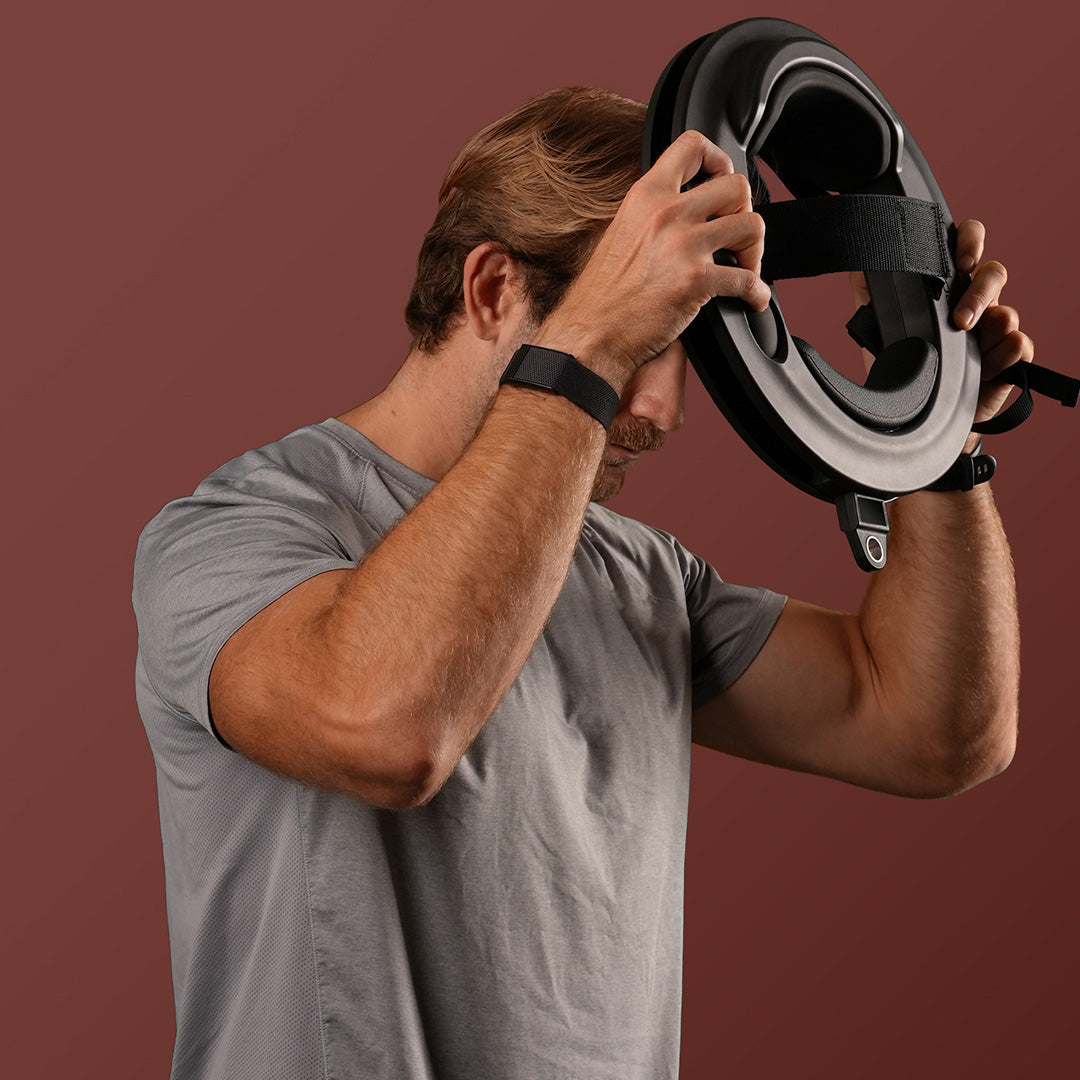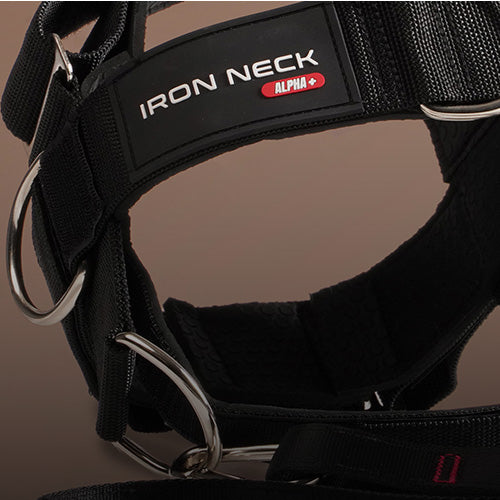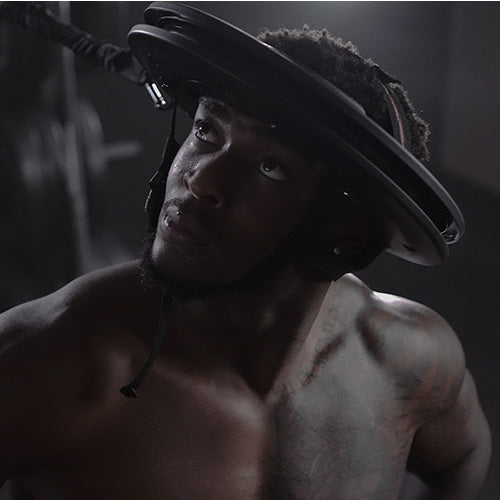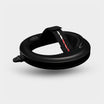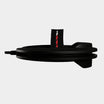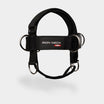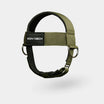"The greatest threat to our game is the risk of concussion," said Arlington (TX) Martin High School football head coach Bob Wager. Sport and strength coaches have to look beyond protective equipment to how they can proactively minimize concussions.
If impacts to the head were the only cause of concussion, advances in helmet technology would have taken a larger bite out of the concussion rate in football, hockey, lacrosse, soccer and other contact sports. But hits to the body also cause concussions, and while pads protect the impact sites, they cannot protect the brain.
Whiplash Effect Drives Concussions in Contact Sports
Nature provides us a built-in helmet: our skulls. Wearing a helmet for sports or recreational activities adds another protective layer between our brain and anything - another person, a projectile, the ground - that hits our head.
Both the natural and man-made protection, though, only attenuates the trauma to our brain from things that directly impact the head from the outside. Any collision against the body or the head can cause the brain to move around within the skull cavity. If there is enough force, the brain will bump, slam and rattle against the internal walls of the skull. That's the downside of such strong armor: because the skull is hard enough to protect the brain from the outside world, it's also hard enough to cause damage if the brain itself is the object having the collision.
The whiplash effect is behind much of the harm the brain experiences from hits to the body.
The head is a relatively heavy appendage (about 10% of body weight) atop a narrow, highly mobile stalk: the neck. When a football player takes a clean, by-the-book hit to the torso, the force from the incoming player is transmitted throughout the body. The legs can handle it: they have a lot of very strong musculature to keep them in place. The arms can handle it: the players have well-developed shoulders as well as an instinctive response to bring everything close in to the torso in response to trauma. But the head is just wobbling up there atop the neck, as we can see when it flicks rapidly back-and-forth from a hit that lands half-a-player's-height away.
The whiplash effect is even more pronounced when the player gets hit from two sides in rapid succession. We've all seen the replays that get worse with each viewing, as the player's head whips from one side to the other to another after getting hit first from the front and then from the side. The same thing can happen when a player lands on his back on a hard surface, like in ice hockey: his head hits the ground with the rest of his body, bounces up and hits the ground again.
Increasing Neck Strength can Reduce Whiplash Effect and Concussion Risk
Collins et al (2014) examined the relationship between neck characteristics and concussions in high school athletes, and showed how the necessary assessments and training could be performed with staff and equipment high schools already have. Among nearly 7,000 male and female basketball, soccer and lacrosse players, Collins' research group found that neck strength was a statistically significant predictor of concussions. Accounting for sport and gender, they found that every 1-pound increase in neck strength reduced the risk of concussion by 5%.
Collins et al used isometric neck strength as their measure. This was partly due to ease of measurement and to establish a reliable, valid and convenient method for training staff to quantify neck strength. But isometric strength may be one of the most important attributes for an athlete's ability to counteract the whiplash forces that lead to concussions.
Isometric strength reflects the ability of the muscle to control movement against an external force. An athlete with greater isometric neck strength may be able to control or dissipate impact forces to the head or body, limiting the amount of whiplash-style movement and, therefore, impact between the brain and the skull. Indeed, Kadlec and Snyder (2018) found that only eight sessions of isometric neck strength training were enough to reduce head and neck movement following an unexpected impact. Similarly, Hamlin, et al (2020) showed improvements in maximal isometric contraction after six weeks of training.
However, the speed with which collisions occur in sport - especially in double impact situations - may preclude the application of isometric force by the neck muscles. Even if the neck muscles react reflexively, they may not be able to generate enough force to counteract the impending whiplash before the force from the impact sends the head on its way. The rate of force development, the magnitude of the force and the ability to prepare for impact through anticipatory muscle activation are all trainable factors in reducing the risk of concussion.
Likewise, impacts can come from any direction. Athletes have to train their necks in every movement, and achieve balance across all planes of motion and agonist-antagonist groups. The results from Dezman, et al (2013) suggest that a 1:1 ratio of neck flexion and extension strength enables better control of the accelerations and decelerations athletes experience in sport.
Football Coaches are Making Neck Strength Training the Industry Standard
If there's one conclusion we can take away from the research on neck strength, the whiplash effect and concussions, it's that football coaches should program neck training with the same sense of purpose and context as any other body part.
"Any type of auxiliary movement, we add the Iron Neck to add an extra component," says Lyle Henley, football performance director at the University of Alabama at Birmingham. "If we're doing shoulder strength, posterior chain, anti-rotation work, we incorporate the Iron Neck to help with different types of concussion prevention training."
UAB assistant strength coach Clay Templeton adds, "Squatting with the Iron Neck is more of a spine and neck stabilization training for how to take a hit. We rotate 360 because you never know where hits are going to come from.
"The year before last we had 12-14 concussions. This year we had zero."
Many of the studies cited above looked at various elements of the neck strength-concussion equation, and did so in the controlled environment of laboratory-based studies.
By contrast, Reneker, et al (2019), took a practical, field-based approach. They employed the Iron Neck as part of a comprehensive sensorimotor training program designed to reduce the incidence of concussions.
The athletes in their study showed improvements in many of the components of strength, perception and balance that contribute to athletic performance and injury prevention. The athletes also experienced a 27% reduction in injuries compared to the previous season. The researchers warn that this result does not achieve statistical significance because of the small sample size, but any coach and athletics department would be proud to improve player safety that much from one year to the next.
Former Arlington Martin's head coach, Bob Wager, viewed neck strength as a way to protect his players and the future of football.
"Being a passionate lover of the game and wanting to do everything I can to protect our players, when you strengthen the neck you minimize the risk of concussion because of the whiplash effect," Wager says. "Not only does it make it a stronger, more confident football player and football team, but you're also taking a proactive approach to one of the biggest threats to our great game."
References:
Collins CL, Fletcher EN, Fields SK, Kluchurosky L, Rohrkemper MK, Comstock RD, Cantu RC. Neck strength: a protective factor reducing risk for concussion in high school sports. J Prim Prev. 2014 Oct;35(5):309-19. doi: 10.1007/s10935-014-0355-2. PMID: 24930131.
Dezman, Zachary & Ledet, Eric & Kerr, Hamish. (2013). Neck Strength Imbalance Correlates With Increased Head Acceleration in Soccer Heading. Sports Health: A Multidisciplinary Approach. 5. 320-326. 10.1177/1941738113480935.
Eckner, J. T., Oh, Y. K., Joshi, M. S., Richardson, J. K., & Ashton-Miller, J. A. (2014). Effect of neck muscle strength and anticipatory cervical muscle activation on the kinematic response of the head to impulsive loads. The American journal of sports medicine, 42(3), 566–576. https://doi.org/10.1177/0363546513517869
Hamlin, Michael & Deuchress, Richard & Elliot, Catherine & Raj, Tilak & Promkeaw, Donlaya & Phonthee, Sirisuda. (2020). Effect of a 6-week exercise intervention for improved neck muscle strength in amateur male rugby union players. 10.36905/jses.2020.01.05.
Kadlec, Daniel & Snyder, Leanne. (2019). Isometric neck strengthening intervention Does an isometric neck strengthening intervention reduce skull sway after impact in female athletes? A pilot study.
Reneker, Jennifer & Babl, Ryan & Pannell, W. & Adah, Felix & Flowers, Meredith & Curbow-Wilcox, Kimberly & Lirette, Seth. (2019). Sensorimotor training for injury prevention in collegiate soccer players: An experimental study. Physical Therapy in Sport. 40. 10.1016/j.ptsp.2019.09.012.
Streifer, Michael & Brown, Allison & Porfido, Tara & Anderson, Ellen & Buckman, Jennifer & Esopenko, Carrie. (2019). The Potential Role of the Cervical Spine in Sports-Related Concussion: Clinical Perspectives and Considerations for Risk Reduction. Journal of Orthopaedic & Sports Physical Therapy. 49. 1-22. 10.2519/jospt.2019.8582.



